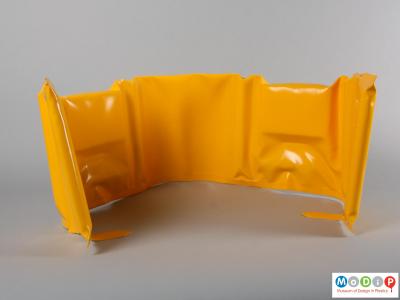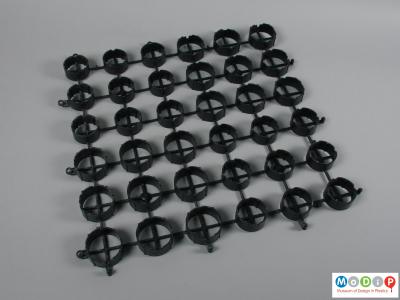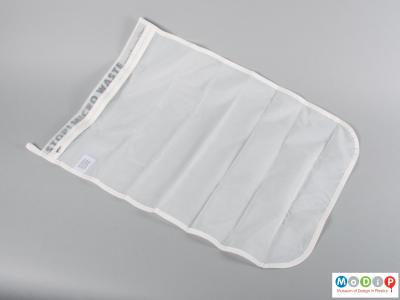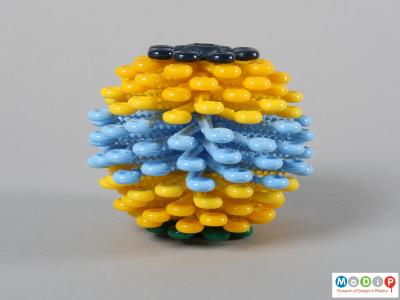In the exhibition Revolution: environmentally conscious design in plastics, MoDiP has started to look at the occasions when plastics can do good for the environment.
Increasingly, when plastics are mentioned in the media it is to report on the environmental damage that they cause. However, plastics can be used to play important environmentally supportive roles.
Fence booms (1) are used as an emergency response, or for long term deployment, to contain oil spills or debris, in calm or sheltered waters such as harbours, rivers and ponds. By containing a spill the boom prevents more of the environment from being effected by the contaminant.
The fashion of tarmacking or paving front gardens to create parking spaces has had a negative environmental impact. Plants in gardens not only provide habitat for animals, birds, and insects, but also help to prevent flash flooding. A paved or tarmacked garden can increase rainwater run off by as much as 50%. This additional water flows into street drains, which often cannot cope, causing streets, and even homes, to become flooded. By using permeable pavers such as the Geograss (2), Runfloor (3), and Truckgrid Max (4), parking areas can be either gravelled or grassed over and still take the weight of light use, heavy use, or even HGV use respectively. Rainwater can flow through the paver without restriction, as they prevent the ground from becoming compacted with use.
There is a risk of the release of mircofibres of plastics into the water system when washing synthetic clothing. Manufacturers are working to create filters on washing machines but until these become commonplace other solutions are being made. The Guppyfriend (5) is marketed as ‘a pragmatic solution to the microfibre problem.’ By placing clothing in the bag fewer fibres are released as the soft surface causes fewer abrasions. Fibres that do break down are captured inside the bag. The design of the Cora Ball (6) is based on coral catching things that float in the water of a washing machine. In both instances, the aim is to catch microfibres before they enter waterways and oceans and cause environmental damage. However, the bag and ball both need cleaning out and there is no alternative but to put the resultant detritus into the bin.






